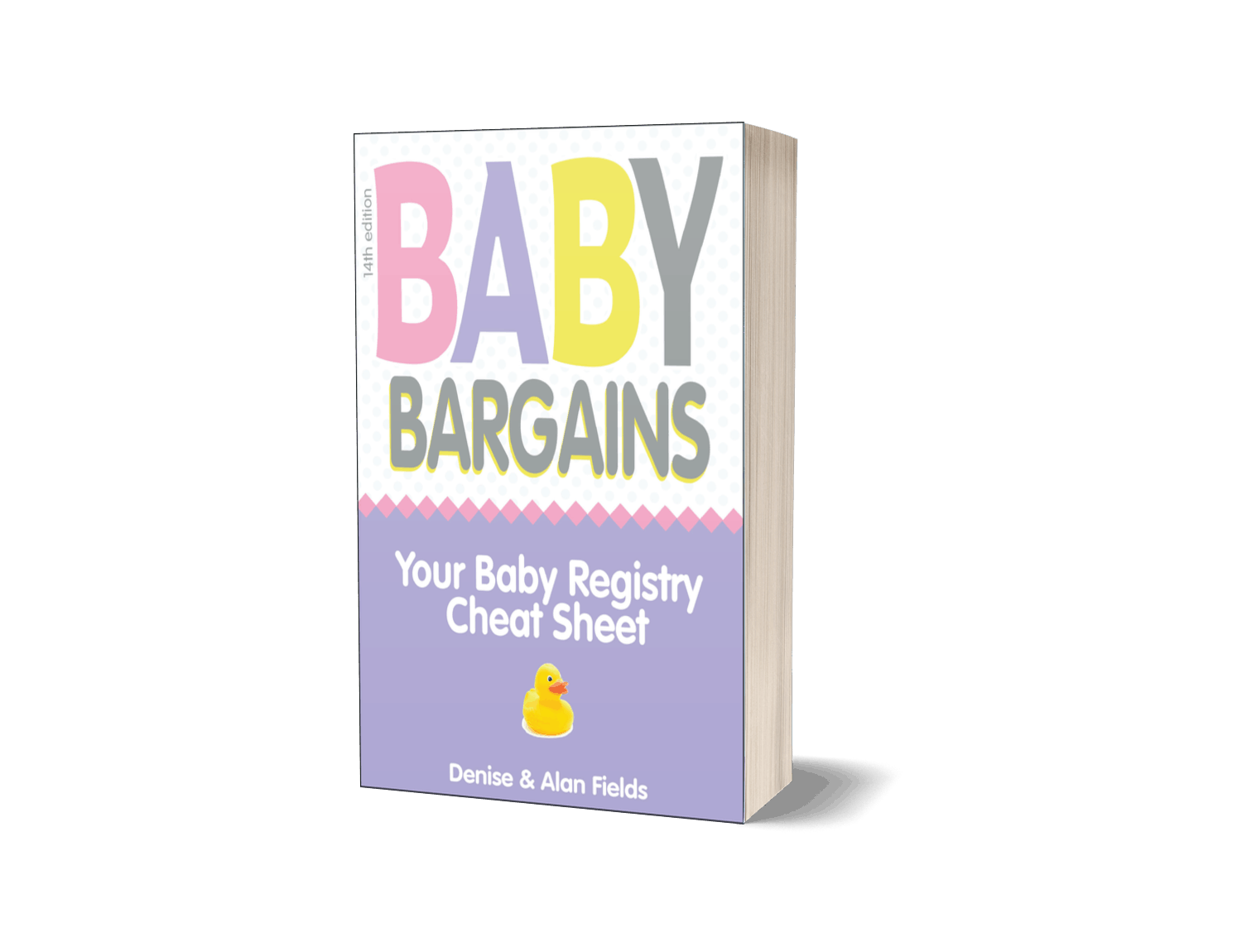Best Booster Car Seat
After researching and reviewing 51 different booster car seats, we pick the Graco Nautilus Snuglock 3-in-1 Harness Booster as the Best Booster Car Seat.
The Graco Nautilus works to 65 lbs. with the harness and 120 lbs. as a booster plus it can be used as a backless booster. The seat has enhanced side impact protection, an adjustable headrest and belt lock-offs, making it one of the most popular seats in this category.
Details: Graco Nautilus SnugLock
Graco makes the best-selling harnessed booster seat on the market and it’s easy to see why—the Graco’s Nautilus works with a five-point harness to 65 lbs. and then converts to a high back booster (100 lbs.) and even a backless booster (120 lbs.) for older kids, a feature the Britax Frontier does not have. Here’s what the seat looks like in backless booster mode: 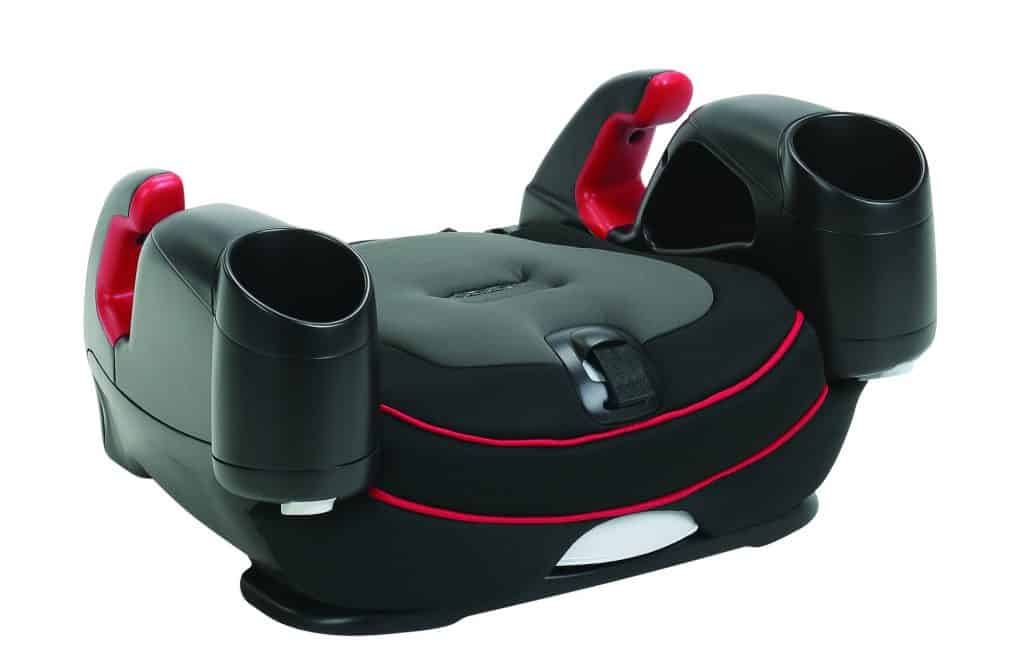
As for reader feedback, the Graco Nautilus earns positive marks from readers for its overall ease of use. The IIHS ranks the Nautilus as a Best Bet when used in highback mode; the Britax Frontier earns the same rating. A quick side note. You may be confused because Graco sells several different Nautiluses. Here is a quick review of the current line-up:
- The base model is the Nautilus 65 (aka Nautilus 3-in-1), which we rank as a “good pick.”
- The Nautilus 65 LX has upgraded fabrics and buckle pockets to hold the harness when not in use; 120 lb. limit as booster seat.
- Finally, we have the Graco Nautilus SnugLock. This is a 2018 update of the Nautilus with a couple added features: SnugLock, which enables quicker installation whether you use a safety belt or LATCH and Simple Safe Adjust, which makes it easier to adjust the harness and headrest as your child grows.
Flaws but not deal breakers
The Graco Nautilus isn’t perfect. Some readers tell us it is too snug to fit larger kids. In those cases, the roomier Britax Frontier Clicktight might be a better bet. The Nautilus also must be assembled, which includes several steps such as “Pull elastic loop on the seat pad through the vehicle belt guide on side of seat and attach to hook as shown. Repeat on other side.” Compare that to Britax where the seat basically comes out of the box ready to use. We’re not saying the Nautilus is as fun to assemble as IKEA furniture, but we noted more than a few readers said assembling Graco boosters had them swearing like a pirate. So just a heads up.
Who else likes it
The Insurance Institute for Highway Safety gave the previous version of this seat a “Best Bet.” It hasn’t tested the new SnugLock version as of this writing.
Also Great: The Britax Frontier ClickTight
Britax has steadily improved this seat over the years (the most recent version on the market is the G1.1). Overall weight and height limits have moved higher and there are a series of small enhancements (example: the cup holders are inset in the seat, rather than stick out from the side, etc.). The Frontier 90 also has:
• A ClickTight seatbelt installation system. This system automatically tightens and tensions the seat belt—no more locking clips or concerns about LATCH seat limits. Here’s how it works:
• SafeCell crash protection in base. Seen in Britax’s other models, this system absorbs energy in a crash.
• Higher top harness adjustment. The top harness slot is now 20.5″, which is the tallest in the industry. That will keep kids from outgrowing the seat in harness mode too soon. Other small improvements to the seat include a better recline feature and now the harness hides away when you convert the seat to booster mode (before it had to be removed completely). Reader feedback on the Frontier has been positive.
Ease of installation is one plus, according to parents, as well as the high weight limits and plush padding. In the most recent booster seat ratings from the Insurance Institute for Highway Safety (IIHS), the Frontier improved its ratings from a Check Fit to a Best Bet. One point about this: this rating is for the booster mode only (not the harness mode).
Flaws but not deal breakers
Are there any negatives to this seat? Well, this is definitely a big, bulky seat. Carrying it through an airport isn’t going to be fun (the Frontier is certified for use in an airplane, but only with its five-point harness—not as a booster). The Frontier is 19.5” wide—that means fitting three across in a carpool won’t be easy for most vehicles. Also: the Frontier has limited recline settings and that might be a negative for some.
Another drawback: price. The Frontier 90 is typically priced higher than most rivals like the Graco Nautilus. And the Graco Nautilus has an extra use as a backless booster (the Frontier only works as a belt-positioning or high back booster).
Who else likes it
The Insurance Institute for Highway Safety awarded this seat a Best Bet in high back mode.
Best Budget-Friendly Booster Car Seat
Yes, it lacks the bells and whistles of our top recommended seats, but it still gets the job done: keeping your kiddo safe when they outgrow their convertible seat. The Evenflo Maestro scored well in crash tests and is a reader favorite when you have a tight budget. The downside? It isn’t as easy to adjust or remove (when attached with LATCH) compared to more expensive seats.
Best Belt-Positioning Booster
The Graco TurboBooster is the best belt-positioning booster on the market today. It packs a good number of features into an affordable package: height-adjustable headrest, open belt loop design, armrests, back recline, cup holders and more.
Best Backless Booster Car Seat
The best backless booster on the market is the Graco TurboBooster backless. It is an affordable and easy to use booster for older kids who don’t need a high back booster. The Graco backless option works from (roughly) ages four to ten (40 lbs. to 110 lbs.). Again, even though you could use this seat for kids as young as four, we’d suggest a harnessed seat until your child is beyond 80 lbs. or as long as possible.
Why Trust Us
We’ve been rating and reviewing booster car seats since 1994. In addition to hands on inspections of car seats, we have also visited manufacturer facilities and met with safety regulators—and when we travel, we pay our all of our own expenses. We look to our reader feedback to give us a real world perspective on car seats—our message board on car seats has 23,000 (!) threads. Here’s another key point: we don’t take money from the brands we review. No free samples, no sponsors, no “partnerships.” Baby Bargains is your independent and unbiased source for expert baby gear reviews. We’ve been writing and reviewing baby gear since 1994. Yes, that long!
How we picked a winner
We evaluated car seats with hands on inspections, checking seats for ease of use (installation and adjusting the seat). We also gather significant reader feedback, tracking seats on quality and durability. Besides interviewing parents, we also talk with car seat “techs,” certified child passenger safety technicians who install hundreds if not thousands of seats at safety check points nationwide.
We’ve been rating and reviewing car seats since 1994. During that time, we have also visited manufacturer facilities and watched car seat crash tests. While we don’t personally crash test seats, we compare our reader feedback with crash tests done by organizations like the National Highway Traffic Safety Administration and Consumer Reports. We also look at third-party evaluations of seats by groups like the Insurance Institute for Highway Safety (IIHS), which focuses on booster car seats.
7 Things No One Tells You About Buying a Booster Car Seat!
1. Booster seats come in four different flavors:
◆ High back boosters (HBB): Belt-positioning boosters come in two flavors: high back boosters and backless boosters. High back boosters have often been called “kid’s captain’s chairs,” which they kind of resemble. They are designed to be simple, but provide vital safety features for children who’ve outgrown a harnessed seats. These boosters properly position the lap belt on a child’s strong hip bones, rather than letting it ride up on the soft internal organs. And they provide correct positioning of the shoulder belt, so the child can comfortably wear it and get critical upper body support. The high back also protects the child’s head from whiplash if there are no head restraints in the vehicle, and the high back may also give some side sleeping support. ALL of these boosters require a lap and shoulder belt. FYI: Some high back boosters convert into backless boosters for older kids.
◆ Backless boosters: These belt-positioning boosters work the same way as high back boosters—they just don’t have a back. Safety-wise, these can be a bit better than a high back booster, since the child sits against the vehicle seat. They do the same job positioning the lap belt, and usually include some sort of strap to adjust the shoulder belt. But they don’t provide head support if you have low seat backs, and they don’t give any side or sleeping support. On the other hand, they are often popular with older kids, since they can be quite inconspicuous.
◆ Harnessed boosters: These are probably the most confusing “booster” seats because they sometimes morph from a forward-facing harnessed seat to a belt-positioning booster (and in some case) to a backless booster. With the five-point harness, boosters can generally be used up to 65, 80 or 90 lbs. Then the harness is removed, and the seat can be used as a belt-positioning booster, usually to 80 or 100 lbs. These seat also may be referred to as “combination,” or “combo” for short, from the two jobs they do. Our top recommendation on this page is for a harnessed booster.
The take-home message: we recommend a harnessed booster as the safest option to transport a toddler. Keep your child in the harness as long as possible (given seat weight and height limits).
◆ Special Needs Seats: There are a few seats on the market now that don’t really fit into any category. One is the Britax Traveler Plus, which is designed for special needs kids up to 105 lbs.
2. When is your child ready for the auto safety belt?
Some states allow children as young as six to legally ride in an auto safety belt (that is, booster seat use isn’t required). But there is the law—and the law of physics. Numerous peer-reviewed safety studies show that continued booster seat use is the safest course . . . until a child can SAFELY use an auto safety belt. When is that? When a child is over 4’9” and can sit with his or her back straight against the back seat cushion (with knees bent over the seat’s edge), then he or she can go with just the auto’s safety belt. Still have doubts? Try this Five-Step Test from Safety Belt Safe, USA (see photo below):
1. Does the child sit all the way back against the auto seat?
2. Do the child’s knees bend comfortably at the edge of the seat?
3. Does the belt cross the shoulder between neck and arm?
4. Is the lap belt as low as possible, touching the thighs?
5. Can the child stay seated like this for the whole trip?
If you answered no to any of these questions, your child needs a booster seat, and will probably be more comfortable in one too.
3. Using a booster seat too soon can be dangerous.
You’ll note that some harnessed boosters have starting weight limits as young as 20 lbs.—that could be as young as a six month aged baby. But remember this: all boosters are forward-facing. And the current recommendation by safety experts is to keep your child REAR-FACING until age 2 or longer. So even though you could use a forward-facing harnessed booster for a one year old, we wouldn’t recommend it. Also: don’t abandon the harness too soon. Yes, you could switch to a belt-positioning booster as soon as four years (or 40 lbs.). Our advice: don’t. Keep your child in that harness as long as you can (that’s why our top recommended seats on this page have top harness limits of 80 and 90 lbs.).
4. Your car’s owner’s manual is an important resource.
Sure, you probably haven’t look at it since you purchased the vehicle. But most auto manuals have detailed advice about car seat use. And that comes in especially handy when you start using a booster. That’s because some boosters can use LATCH—but your vehicle may prohibit this use when the weight of your seat plus your child exceed a certain limit.
5. Sitting in a belt-positioning booster requires maturity.
Yes, we recommend using a harness as long as possible—but we are also the parents of two kids. And we remember the pleas from a toddler who didn’t want to sit in a “baby seat” (that is, the harness). The challenge: to use a belt-positioning booster, a child must be mature enough to understand the iron clad rule: you NEVER wiggle out from under the belt when the car is in motion. Some kids are ready for this and others need more time in a harness!
6. Only use cardboard cups in booster seat cup holders.
You’ll note that many booster seats come with cup or juice box holders. These are a great convenience, but most car seat makers only recommend putting cardboard cups or juice boxes in these holders. Why? In a collision anything heavier than a cardboard juice box or cup can become a dangerous projectile.
7. There isn’t one national standard for how long your child should be in a booster seat.
Booster seat use is regulated on a state-by-state basis, at least when we’re talking about how long kids must remain in a booster. Some states have an age limit, some a weight and/or height limit. If you’re unsure about the rules in your state, check your state Department of Motor Vehicles’ web site.
Safety Alert
Certifications to look for when booster car seat shopping NHTSA Ease of Use Rating: The National Highway Transportation Safety Administration (NHTS) publishes Ease-of-Use Ratings that cover four areas:
- Evaluation of Instructions: Content and clarity of the instructions manual for the child restraint.
- Vehicle Installation Features: Features that pertain to installing the child restraint in a vehicle.
- Evaluation of Labels: Content and clarity of the labeling attached to the child restraint.
- Securing the Child: Ease in securing a child correctly in the restraint.
Seats are ranked on a one to five star scale. While you can find these ratings here, we have also included NHTSA rankings in each of our reviews (see below). Insurance Institute for Highway Safety (IIHS) uses a six-year-old dummy to check the lap and shoulder belt fit of booster seats. Seats are award ratings of Best Bet, Good Bet and Check Fit. The last rating doesn’t mean a seat has failed, but requires a parent to double check fit in their own vehicle. And yes, there are a few seats that are “not recommended.” Here’s how the IIHS looks at booster seat fit:

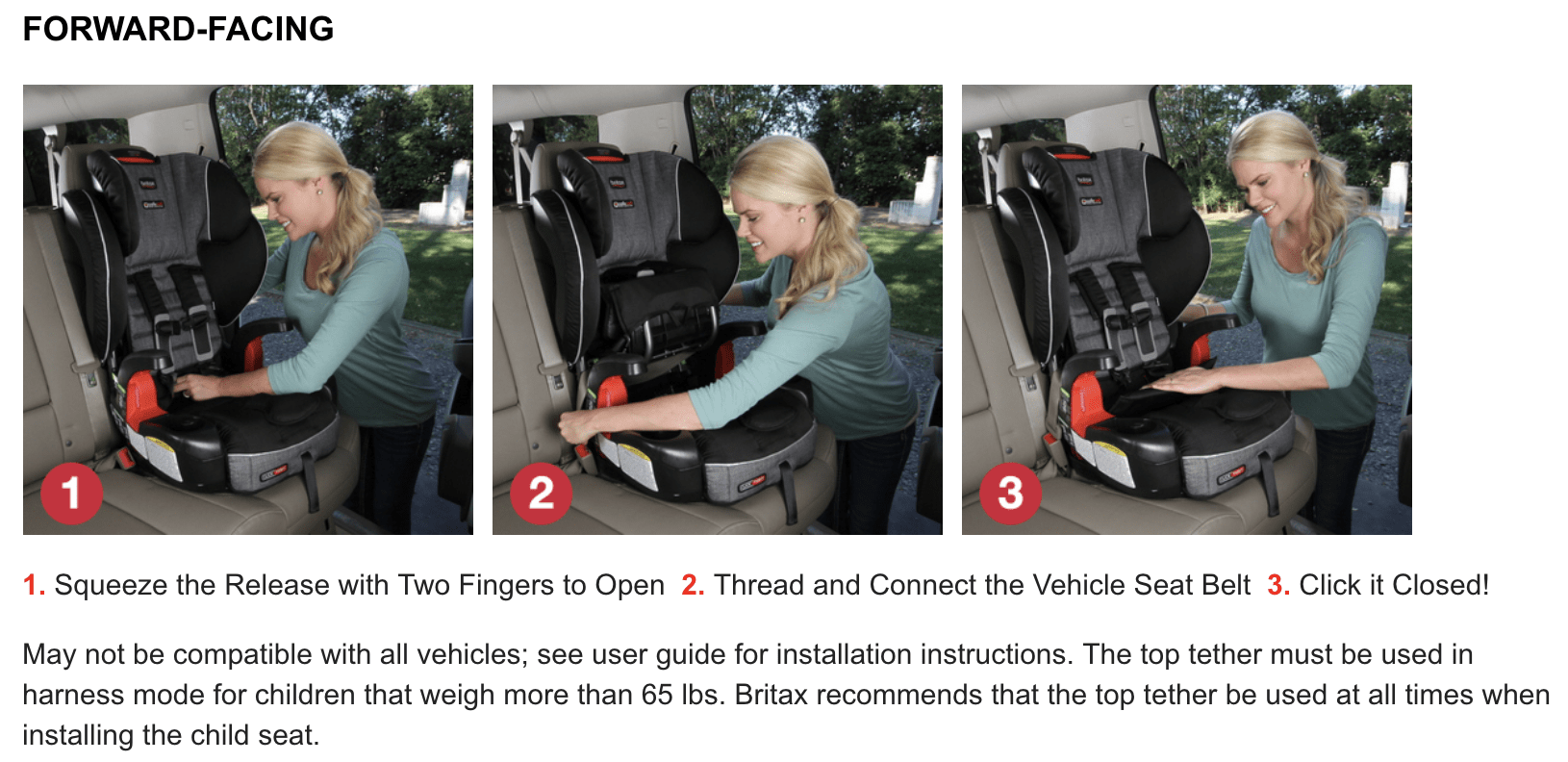
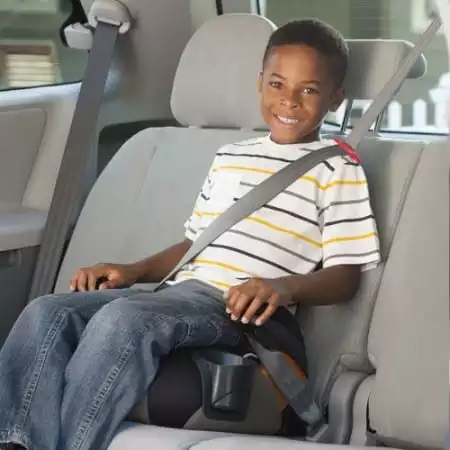
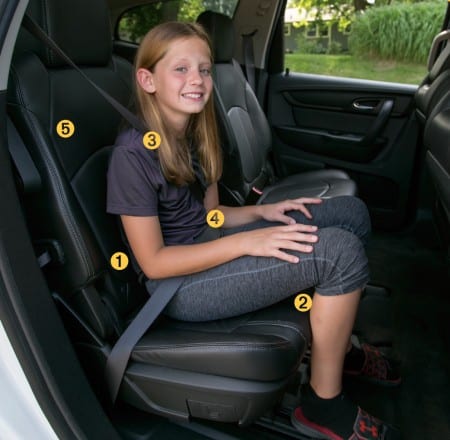
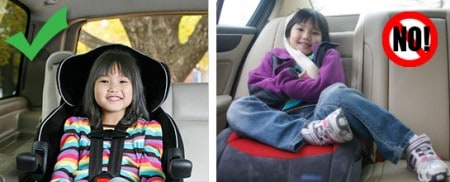
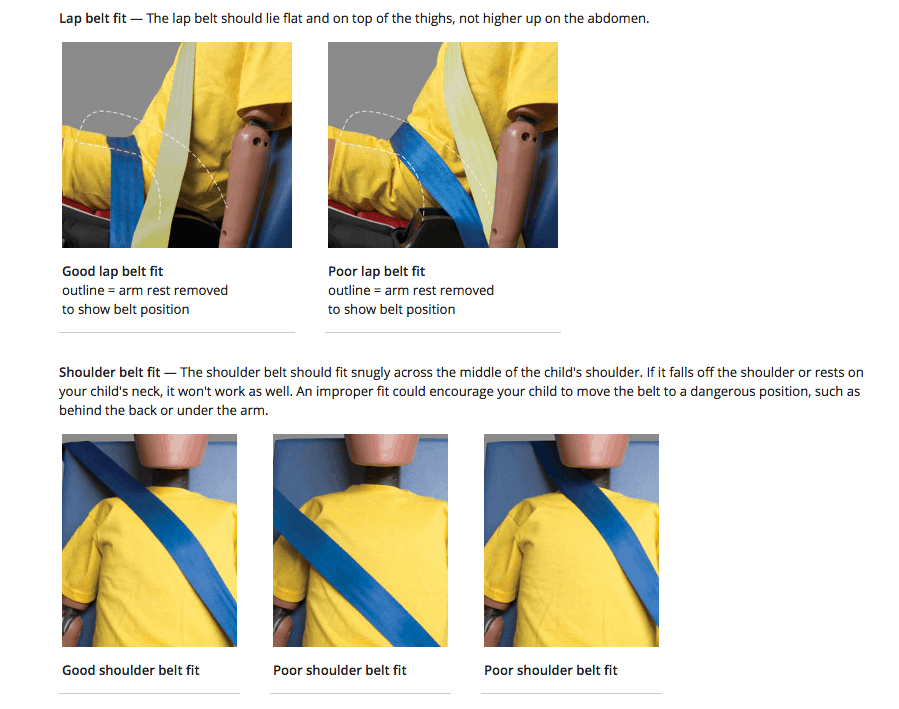
 We obsess over gear for families and the home . . . so you don’t have to. Baby Bargains has one mission: help you find the best gear for your family with unbiased reviews by experts with 20 years of experience. At prices that don’t break the bank. When you purchase a product from links on this site, we make a small affiliate commission. Learn more
We obsess over gear for families and the home . . . so you don’t have to. Baby Bargains has one mission: help you find the best gear for your family with unbiased reviews by experts with 20 years of experience. At prices that don’t break the bank. When you purchase a product from links on this site, we make a small affiliate commission. Learn more 
